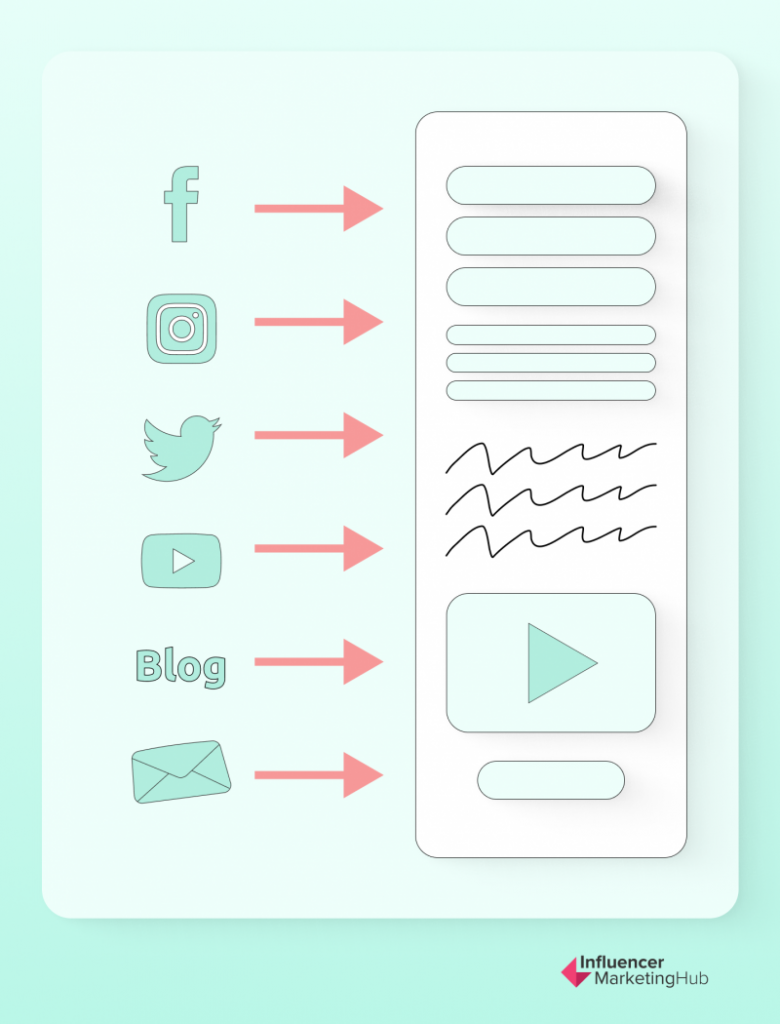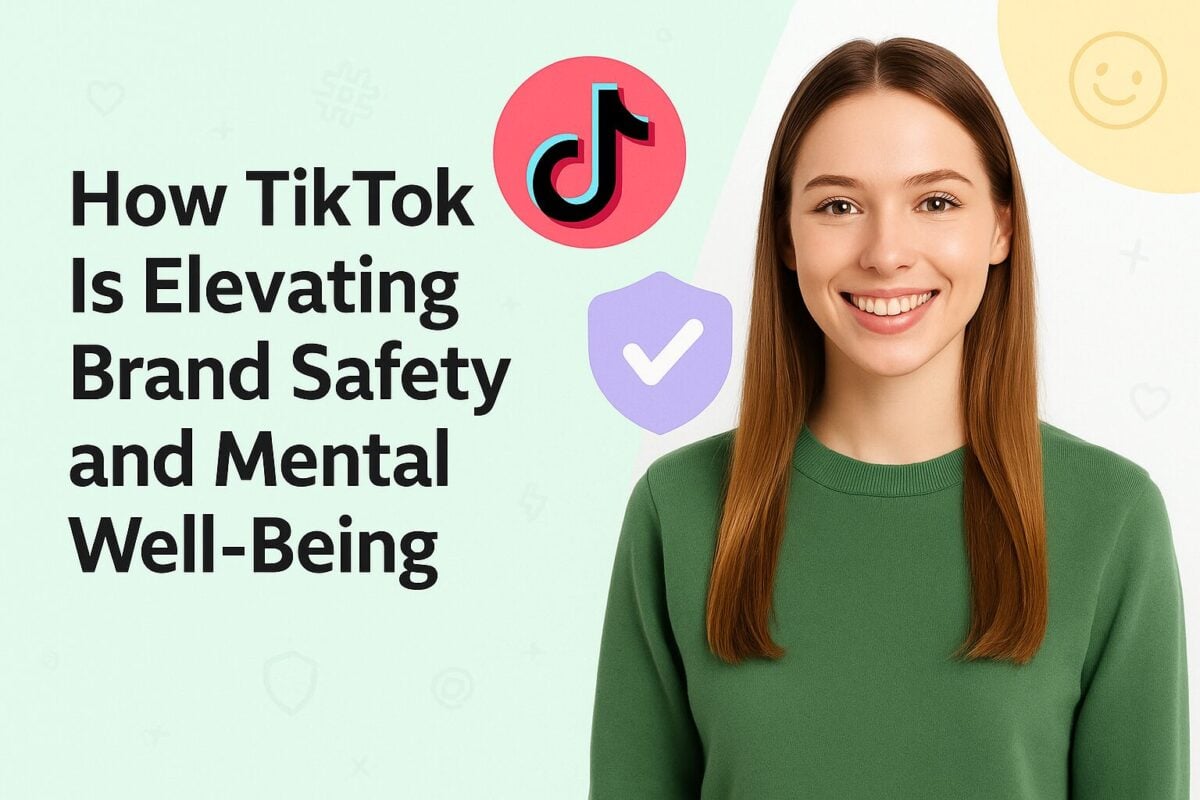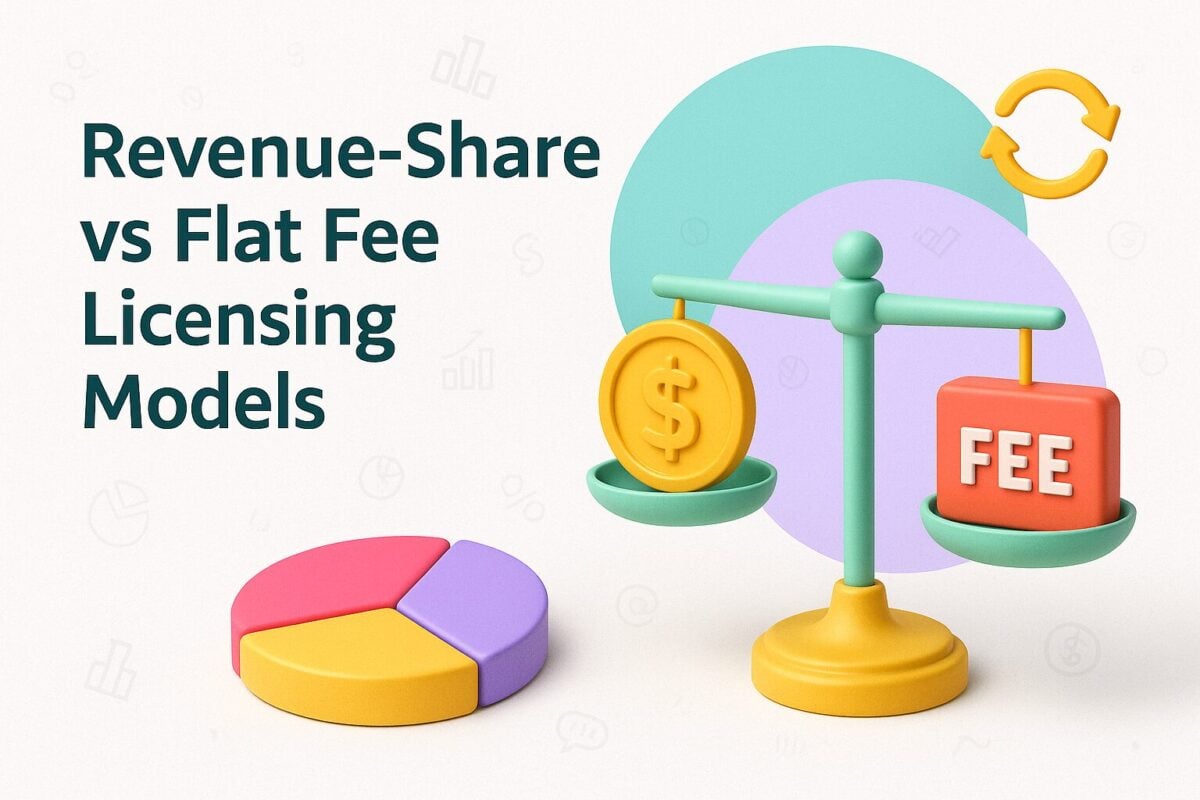Looking for a way to sell your online course? This blog post will unpack a process you can follow to generate sales. We’ll look at the importance of creating a funnel, how to build your sales page, why traffic is essential, and more. By the time you're done, you’ll have a clear idea of how each of these components, and many others, come together to create a well-oiled sales machine for your online course.
How to Sell Online Courses: The Ultimate Guide for 2024:
Online Course Revenue Estimator
Monthly Revenue Potential
$900,000
Yearly Revenue Potential
$11M
Create a Funnel
A funnel is a mechanism for attracting, educating, and converting strangers into customers. Funnels include various components such as traffic sources, sales or landing pages, order-taking tools (payment gateways), and communication devices (email for nurturing). To get started, you’ll need to develop an idea of whom you’re selling your course to. This is known as a persona of your ideal customer.
Develop a Customer Persona
Personas are quintessential elements of marketing and sales activities. They help you quickly and easily establish who your ideal customer is, and what problems, challenges, needs, and desires they have in relation to a solution like yours. Personas also help you establish how much information your ideal customer typically has when in the market for a solution like yours. When you develop a well-defined persona, you'll be able to use it for every bit of marketing and sales content you produce and rest assured that your material will speak directly to your ideal customer.
What should go into your customer persona document? There are a host of questions that you can ask to define who your ideal customers are. DigitalMarketer offers an easy-to-use customer avatar designed to help you quickly narrow down who your ideal customer is. Download a copy here.
Source: digitalmarketer.com
Build a Sales Page
Sales pages are nonnegotiable when it comes to selling online courses. They act as your 24/7 salesman, introducing new concepts, persuading prospects, and closing them. The best part about owning a highly effective sales page is that it converts like clockwork.
Design Your Sales Page
Sales pages are meant to be highly effective tools for converting visitors into paying customers. To generate sales, your sales page has to be able to sell ideas, do away with fear, uncertainty, and doubt, and have a call to action that closes the sale.
Here are the most critical components that your sales page must include:
- Sell a Big Idea Headline
A big idea is a positive, life-changing outcome learners will experience after taking your course. Big ideas are work because they challenge readers to imagine a new reality filled with possibility.
- A Practical Promise
While your big idea will excite prospects, it’s still a big idea and will seem out of reach. To convince your audience that they can achieve success, you must whittle the big idea into practical steps that anyone can follow.
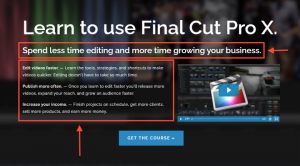
Source: apple.com
- A Call to Action
Calls to action are powerful messages that evoke decision-making. For prospects, investing in your course represents the possibility of experiencing a new world. For your call to action to be effective, it must echo a sentiment of positive change.

Source: 10xemails.com
- Tell a Story
Effective sales pages use storytelling to draw audiences in. They touch on pain points and then present a solution. Your sales page must do the same. With the help of your customer persona document, draw on the challenges, pain points, needs, and desires of your ideal customer and incorporate them into a well-structured message.
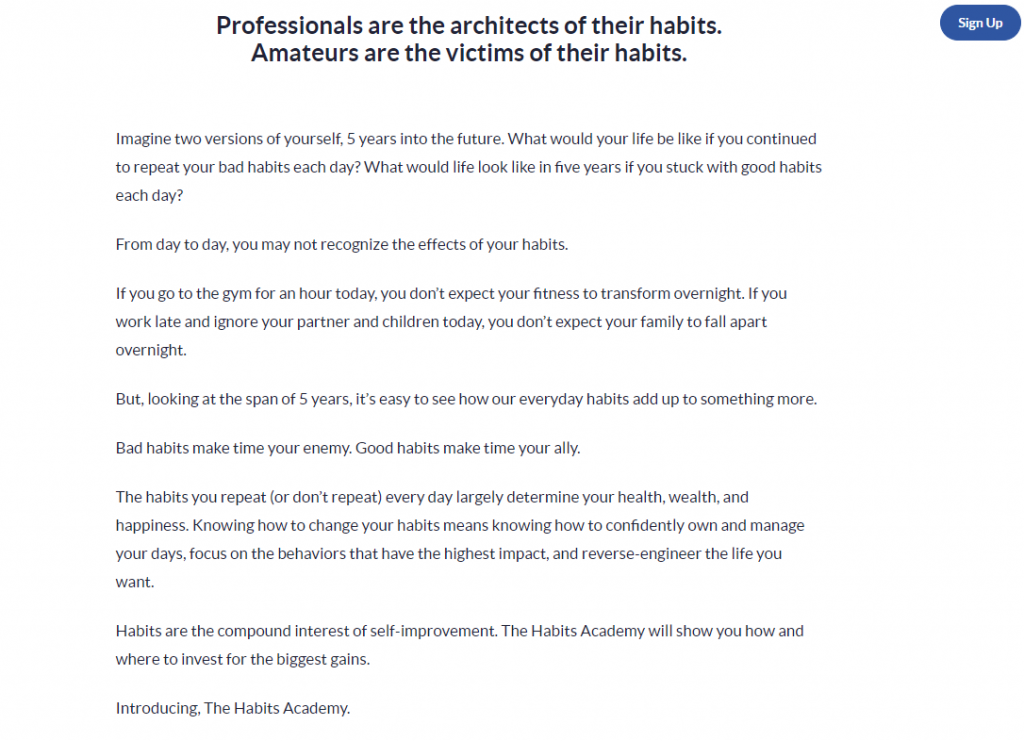
Source: habitsacademy.com
- Provide a Course Breakdown
Show what’s included in your course by covering what each section offers and how learners will benefit from them. And that’s the key. Identifying benefits derived from learning outcomes will help prospects quickly appreciate the value of your course. Use bullets with benefits for each part of your course. Also, include images of your course content to give prospects an idea of what they are getting.
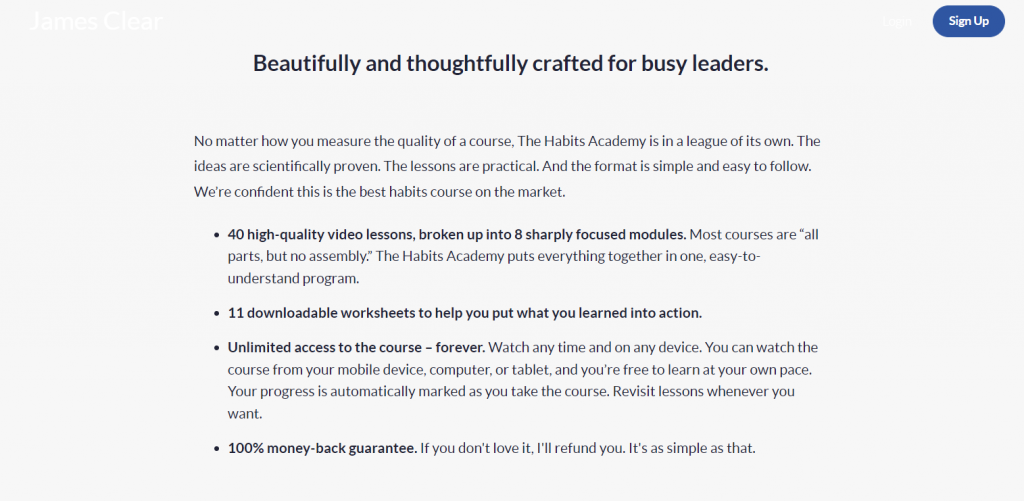
Source: habitsacademy.com
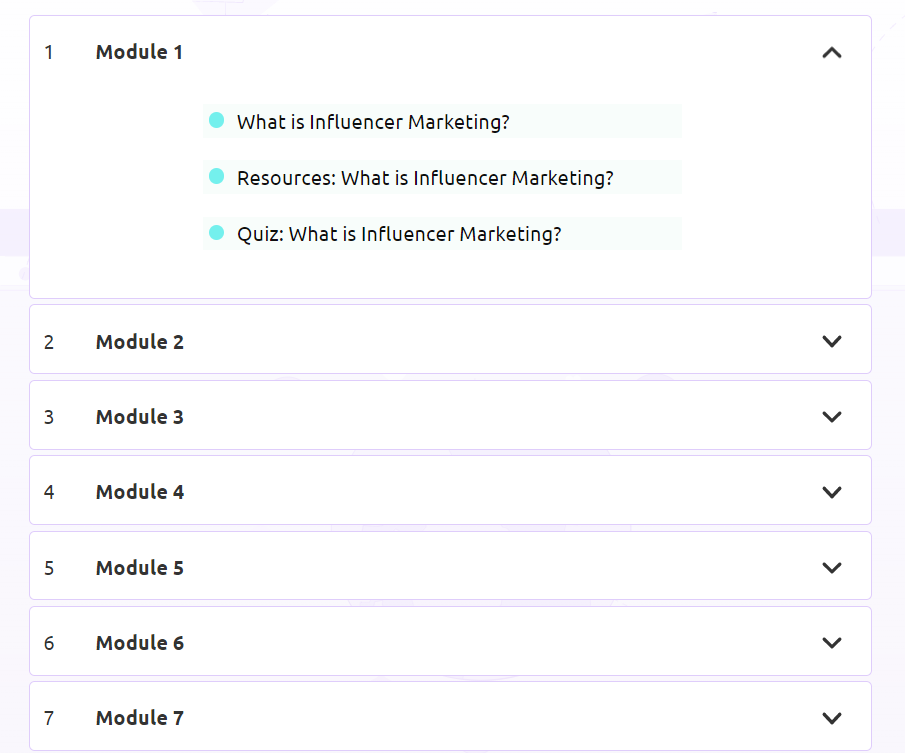
Source: influencermarketinghub.com
- Include Social Proof
Social proof is a powerful psychological trigger. Today, people spend a lot of time researching products and learning how they’ve helped others. When people see favorable reviews, they are more likely to invest in a product or service. You can leverage testimonials to generate the same positive outcome. Include at least three with varying detail about how your course has helped each student in different ways. Also, be sure to provide believable testimonials. While students may experience a life-changing moment, unbelievable can sometimes hurt your chance as convincing prospects that your course works.
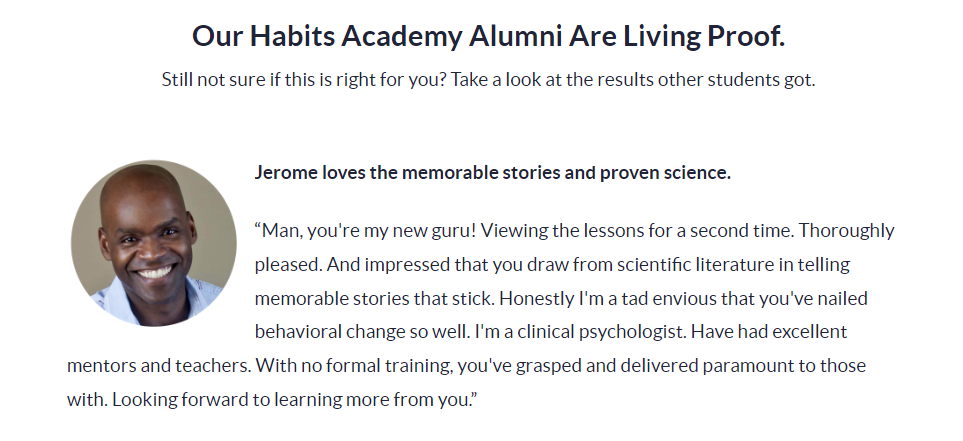
Source: habitsacademy.com
- Introduce Pricing
There’s a good chance that you’ve already provided a price point before people arrive at your pricing section. This approach often works to quickly close ready-to-buy prospects. For those who need more persuasion, provide your pricing along with text that includes a brief description of what students are getting. These can be in the form of bullets. Reiterating what’s on offer reinforces the value of your course and that it’s worth the cost.
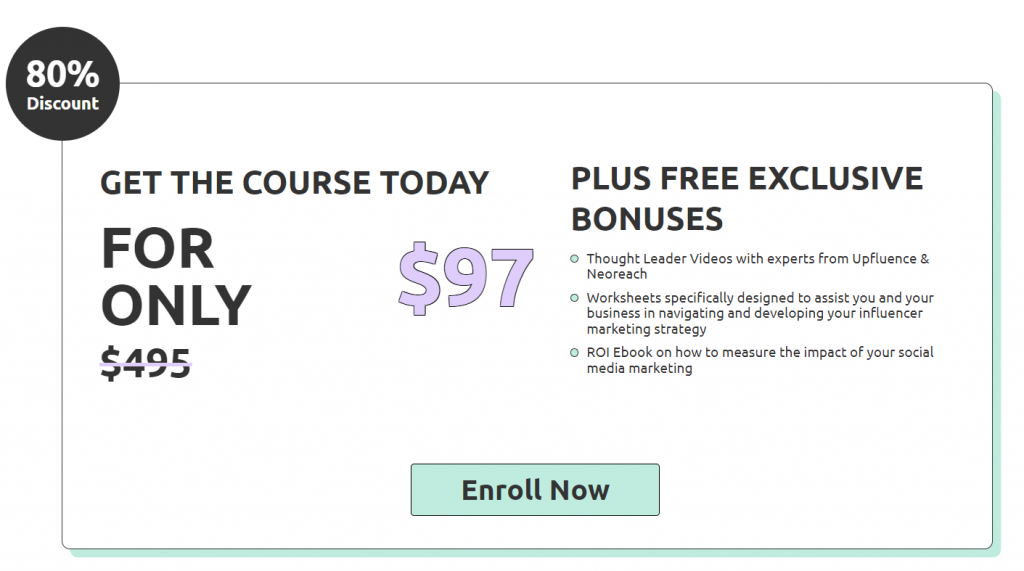
Source: influencermarketinghub.com
- Use FAQs
FAQs are a staple for online course sales pages because they work. Having them neutralizes fear, uncertainty, and doubt.
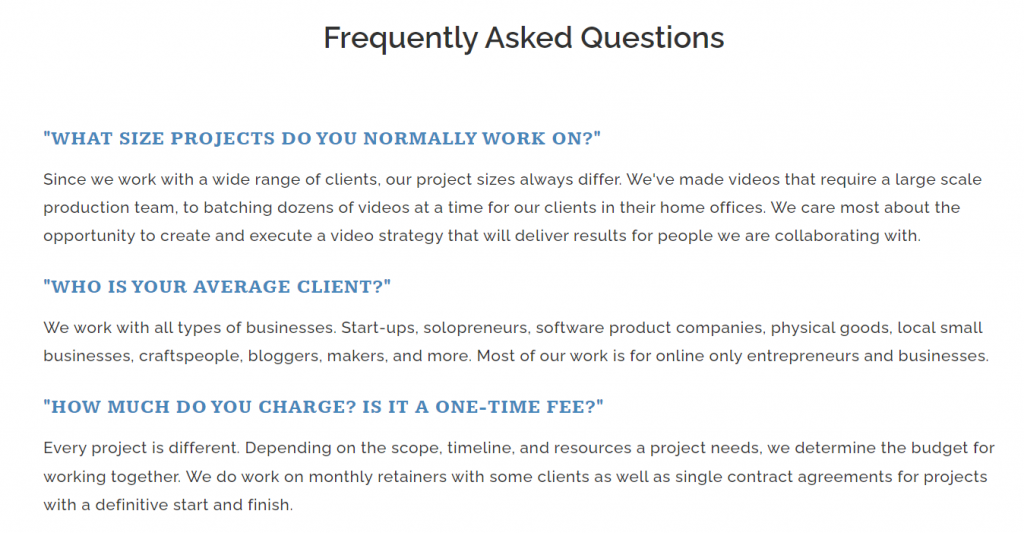
Source: calebwojcikfilms.com
- Include a Money-back Guarantee
A money-back guarantee may seem like a risky idea, but it helps reinforce the value and quality of your course. When people feel like that can return a product, they appreciate that your guarantee is proof that it will work. When creating your money-back guarantee, set a time limit on when people can qualify for it. 30 to 60 days is the standard, giving learners ample time to appreciate your course and act.
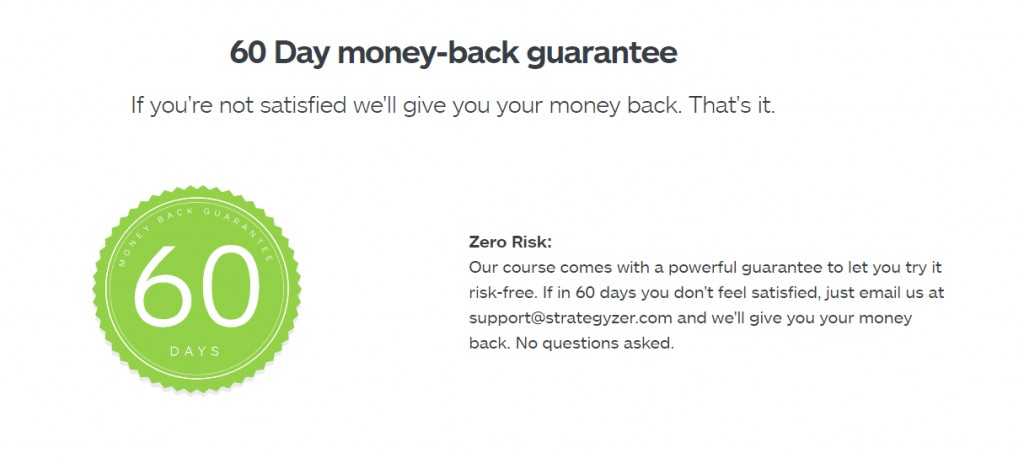
Source: strategyzer.com
- Add Your Bio
Bios show learners who they are learning from and why you’re especially qualified to teach. When creating yours, make it brief. Focus on points that are aligned with the knowledge that will be covered in your course, and how your experience makes you the best person to teach.
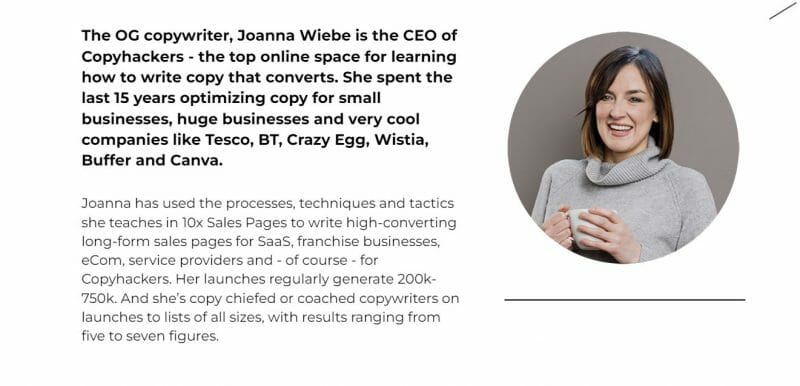
Source: copyhackers.com
Identify Your Traffic Sources
Traffic is essential for sales. You can generate traffic in various ways, from paid ads to organic content like social posts, blog posts, and YouTube videos. Of all sources, paid ads generate traffic fastest. This is because they position your brand and course in front of ideal customers faster than organic content can.
Your goal is to send as much traffic as possible to your sales page to convert it into revenue. To identify your traffic sources, create a list of places where your ideal customer frequents. As you may have guessed, this is where your customer persona is useful yet again. Once you have a list of places (i.e. Facebook, Twitter, YouTube, industry-relevant websites, and more), investigate how you can use each platform to promote your course and send that traffic to your sales page.
The great news about most platforms is that they offer insights on audiences. For example, on Facebook, you can tell where your audience is located, what interests they have, and more. Leverage this information to create strong ads that attract prospects.
Use Email
Traffic sources can vary, and email is one you should leverage. It’s a powerful tool for communication and can be used to drive warm traffic to your sales page. It also works as a great nurturing tool for people who is a sign-up for a lead magnet but never committed to the sale. With the right email sequence, you can turn these prospects into customers.
Teachable provides a great example of how to use email nurturing in what they call the “Crazy 8 Launch Strategy”. The strategy is an 8-day email marketing campaign that engages prospects with everything from announcement, FAQ, and sneak peek emails to cart abandonment emails. Here’s what it includes:
Day 1: Announce Your Course
Email subscribers and share that you’re launching a course. Include what it’s about and that you’ll send an enrollment date soon.
Day 2: Share What’s Included
Go into detail and cover every section, lesson, and benefit of your course. This email will be long, but worth it.
Day 3: Launch Day
Let people know that enrollments are open.
Day 4: Send FAQs
Address questions they may have before purchasing your course.
Day 5: Bonus Incentive to Buy Now
Capture stragglers by sweetening the deal with a limited-time discount.
Day 6: Social Proof and Thanks to People Who Enrolled
Share testimonials from people who've purchased your course and are happy with the decision.
Day 7: The Closing Email and Logical Argument
With the enrollment window closing soon, you must create a logical argument for why now is the best time to commit to the course.
Day 8: Your Last Chance
After all correspondence, you’ll invariably have stragglers. Day eight is dedicated to converting them through a series of three emails. The first emphasizes the cut-off date for enrollments, the second expresses gratitude to all enrolled students, and the last gives those not enrolled one last chance to take action.
Leverage SEO
Creating a blog may seem like a prolonged approach to selling your course. We recommend creating one because it’s part of a long-term strategy to drive traffic and sales, and it’s a relatively cheap way to build a brand. Organic content often takes a while to rank and therefore won’t produce results immediately, unless yours has been running for some time and ranks in search easily. Typically, ranking results will start to show in 3 to 6 months of publishing content. You can expedite this process by guess posting and using those backlinks to rank higher. In addition, with the right backlink outreach strategy, you can rank faster.
Create blog content related to your niche. To help promote it, turn to platforms like social media to get the word out. Also, ensure that you have an outreach strategy to help you acquire backlinks.
Not sure how to conduct a backlink outreach strategy and save time? Here are two helpful videos from Neil Patel on how to generate backlinks fast.
How to reach out for backlinks:
How to perform outreach faster:
Sign-up Affiliates
Affiliate programs are one of the easiest ways of getting your course out to the masses. Creating one opens your course up to an army of online entrepreneurs who make a living promoting affiliate offers. They typically have email lists of their own and access to marketing budgets that allow them to drive strong paid ad campaigns.
When you create your affiliate program, be sure to offer your affiliates a worthwhile deal. Affiliates are driven by earning potential, and for them to commit to promoting your course, they have to see the potential for high payouts.
Affiliate programs aren't difficult to set up either. If your course is on a platform like Udemy, Teachable, or Kajabi, you have automatic access to an affiliate suite of tools These tools may include an affiliate dashboard for tracking sales, traffic, and payouts. Some platforms also allow you to create unique affiliate sign-up pages and recruit affiliates from within your course platform dashboard.

Source: kajabi.com
Track Your Success
Selling your course is an ongoing practice. To generate the best possible results, you’ll need to track your success. Most online course platforms include analytics tools that help identify where your traffic comes from, how much traffic you get, and how much of it converts into sales. While these are valuable insights, add a layer of data to what your platform offers. Most solutions allow you to integrate applications like Google Analytics or Mixpanel.
While these tools are a little more advanced, they will offer additional valuable information. You can tell which countries more of your students come from, which devices they view your ads and purchase from, and more. Data like this will help you channel your advertising budget to jurisdictions where you’re converting at a higher rate, or help find smarter ways of driving more traffic and conversions.
Build Your Sales Machine
Selling your online course is a process. While there is a degree of creativity required to produce compelling sales messaging, that too can be accomplished. But you must have a plan before you go to market. Design a funnel by identifying your ideal customer, building a sales page, identifying your traffic sources, and driving traffic to your sales page. Your success all comes down to how well you can attract and convert more people into paying customers.
Frequently Asked Questions
What kind of online courses sell the most?
These are the most in-demand online courses and niches right now:
- Business
- Computer and IT
- Academics
- Arts & crafts
- Digital marketing
- Writing and content creation
- Blockchain and crypto
- Photography
What is the best place to sell online courses?
The best places to sell online courses are digital class, thinkific, and Udemy as well as Teachable and Podia. To sell online courses, you need to create effective and persuasive course content.
Which online courses is most profitable?
These are the 5 most popular niches and topics for online courses in 2024:
- Business
- Computer and IT
- Academics
- Arts & crafts
- Digital marketing
- Writing and content creation
How do I sell a full course?
To sell your full online course, follow these easy steps:
- Pick a subject for your course
- Create your online course
- Pick a place to host your course and sell it
- Determine the price
- Launch your online course
- Market your online course

